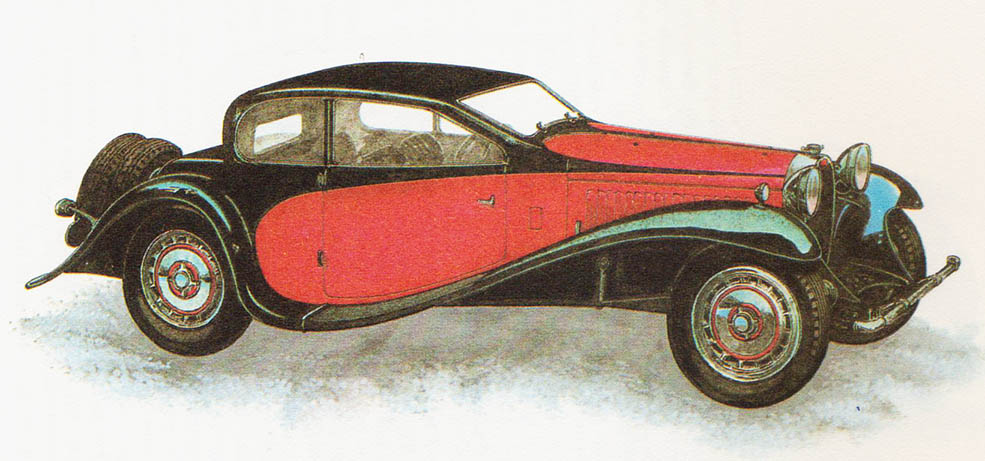BUGATTI 50 T – year 1932
Manufacturer: Automobiles Ettore Bugatti, Molsheim, France.
At the end of the 1920s, cars with compressors took the first place in motorsport. No brand, winning the Grand Prix competition - Alfa Romeo, Maserati, Delage, Talbot or Bugatti - did not appear at the races without an engine with a compressor.
Ettore Bugatti, which initially did not accept this improvement and still in 1924 r. after the model's successes 35 he declared, that his cars don't need a compressor to win, w 1926 r. finally had to approve the qualities of the supercharged engine.

Manufacturer: Automobiles Ettore Bugatti, Molsheim, France.
W 1930 r. The Bugatti entered the market with a new sports car with a compressor. It was a model 50. For the first time, the engine of an entirely new design had two camshafts in the cylinder head. With diameter 86 mm and piston stroke 107 mm reached capacity 4972 cm3, 8-cylinder, with a crankshaft on nine bearings, had a better designed combustion chamber, than previous engines of the same capacity, so that the power came to 166,5 kW (225 KM) by 4000 RPM. Two Schebler carburetors were used to prepare the mixture, and for recharging - Roots compressor, 3-the gearbox was part of the rigid rear axle, sprung with quarter elliptical springs. The mechanical brakes worked on all of them 4 wheels. Special, developed by Bugatti wheels, cast from aluminum alloy in the shape of turbine blades, were cooled with brake drums thanks to their own turbulence. On the mass 1700 kg Bugatti 50 developed maximum speed 185 km/h.
W 1932 r. a sporty variety appeared, marked as a model 50 T, with a weaker engine with power 147 kW (200 KM) and longer wheelbase 3500 mm, compared to the original - 3100 mm. The car was developing speed 175 km/h. This sport-touring model, today counted among the most expensive veterans, it had a wonderfully resolved coupe body, with a slanted windshield. The model pictured is from Harrah's collection in Nevada, USA.
In the years 1930—1934 only 100 copies of this model.